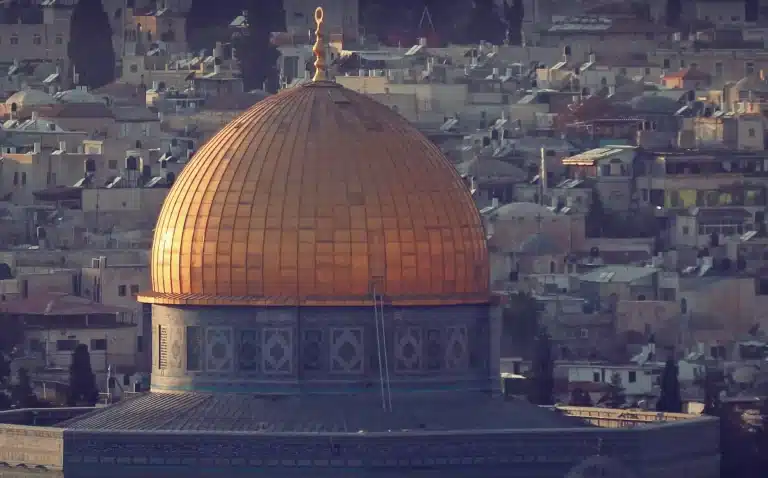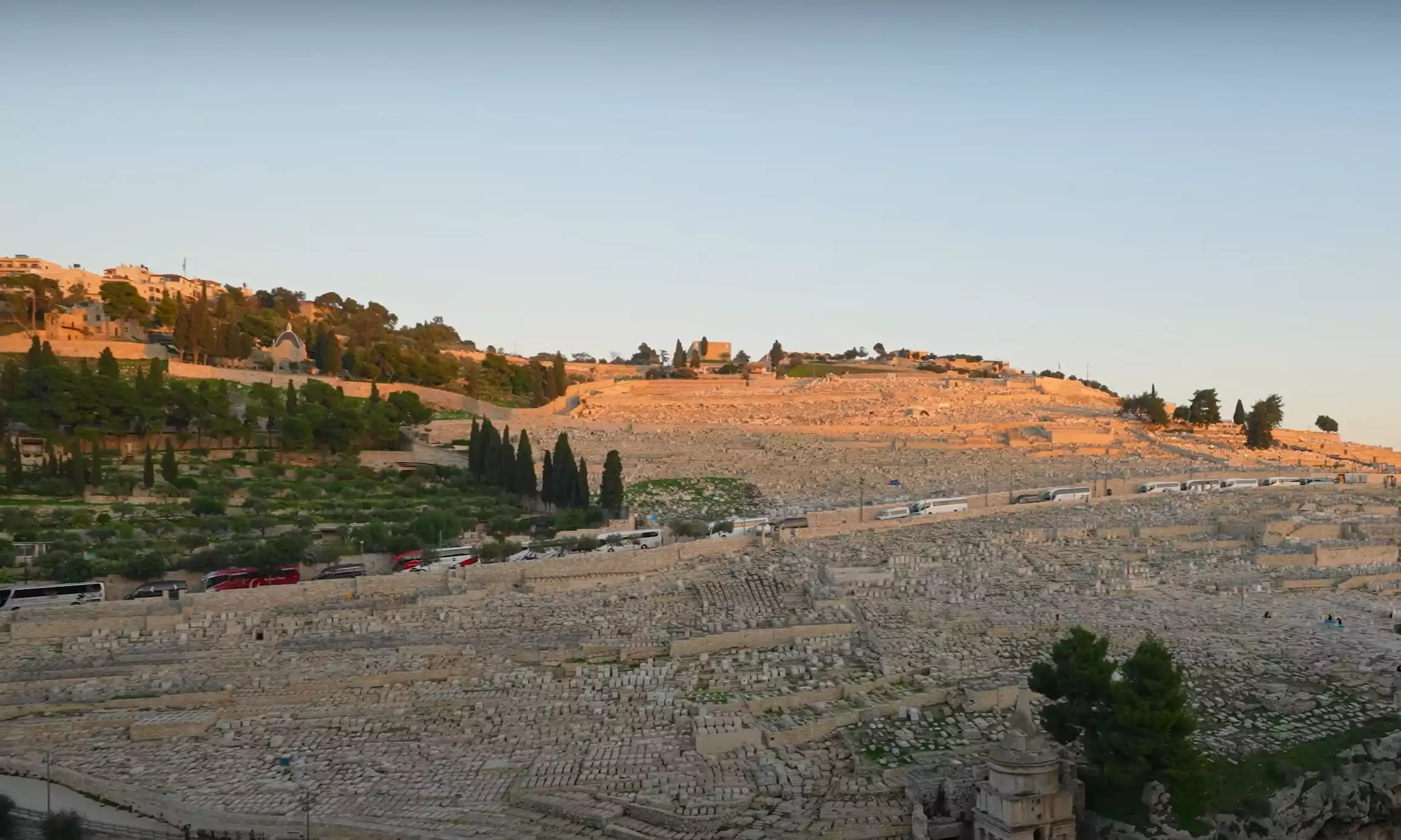
Jerusalem, an ancient city steeped in religious significance, stands as a testament to the enduring legacy of Christianity. Its roots delve deep into history, with archaeological evidence dating back to the 4th millennium BCE. This city, revered by millions, has been a focal point of Christian pilgrimage and reverence since the crucifixion of Jesus Christ, believed to have occurred between 30 and 33 CE. Jerusalem’s intricate history weaves through periods of prosperity and desolation, symbolizing not only the physical embodiment of Christian faith but also the spiritual journey of countless believers.
The Dawn of Christian Jerusalem
Long before it became a bustling metropolis, Jerusalem was already engrained in the narrative of early Christianity. According to Christian tradition, Jerusalem is where Jesus Christ spent his final days, culminating in his crucifixion and resurrection. This profound event marks Jerusalem as the birthplace of Christian pilgrimage, drawing followers to walk in the footsteps of Christ.
The city’s transformation under Roman rule, particularly during the reign of Emperor Constantine in the early 4th century CE, marked a pivotal shift. His mother, Saint Helena, embarked on a journey to Jerusalem, identifying and sanctifying sites significant to Jesus’ life, thereby laying the foundation for Christian pilgrimage. The construction of the Church of the Holy Sepulchre, built around the purported site of Christ’s tomb, further cemented Jerusalem’s spiritual significance in the Christian world.
As Christianity grew, Jerusalem evolved into a symbol of faith, resilience, and redemption. It was here that the early Christians, despite facing persecution, upheld their faith with unyielding fervor. This era witnessed the emergence of significant Christian leaders and theologians, who shaped the nascent religion’s doctrine and practices, forever intertwining Jerusalem’s fate with the heart of Christian belief.
The transformation of Jerusalem into a sacred Christian site was not without challenges. The city, caught in the crosshairs of various empires, experienced periods of destruction and rebuilding. Each phase of its history added layers to its rich religious tapestry, reinforcing its role as a beacon of Christianity.
In this chapter, the foundational events that marked Jerusalem as a critical locale in Christian history are explored, unraveling the city’s journey from a humble beginning to a revered pilgrimage destination. The enduring legacy of Jerusalem in the Christian faith serves as a reminder of the city’s unbreakable bond with its spiritual past, present, and future.

Byzantine Influence and the Holy Sites
The Byzantine period, spanning from the 4th to the 7th centuries CE, heralded a golden age for Jerusalem in the context of Christian development. Emperor Constantine’s conversion to Christianity marked a profound shift in the city’s religious landscape. Byzantine rule brought about the construction of numerous churches and monasteries, turning Jerusalem into a thriving center of Christian art, culture, and theology.
During this time, the Church of the Holy Sepulchre emerged as a focal point for Christian devotion. This era also saw the establishment of other significant sites, such as the Church of the Ascension on the Mount of Olives and the Church of the Nativity in Bethlehem. These sacred locations were not just architectural marvels but also symbols of the deepening connection between the physical city and Christian spirituality.
The Byzantine era was characterized by a flourishing of religious scholarship in Jerusalem. The city attracted theologians, monks, and scholars, who contributed to the development of Christian doctrine and liturgy. This intellectual renaissance in Jerusalem played a crucial role in shaping the early Christian church and its teachings.
Despite the political and military challenges of the period, including invasions and changing rulerships, Jerusalem’s status as a Christian holy city remained undiminished. The enduring Byzantine influence is evident in the city’s rich mosaic of religious heritage, which continues to draw pilgrims and scholars alike.
The Crusades and Christian Stewardship
The advent of the Crusades in the late 11th century marked a tumultuous chapter in Jerusalem’s history. Initiated with the purported aim of reclaiming the Holy Land from Muslim rule, the Crusades were a series of religious wars that profoundly impacted Jerusalem.
The capture of Jerusalem by the Crusaders in 1099 ushered in a period where the city was under Christian rule. This era saw the establishment of the Latin Kingdom of Jerusalem, a time when European influence became prominent in the city’s religious and cultural landscape. The Crusaders embarked on an ambitious program of building fortifications, churches, and institutions, intending to consolidate their hold on the Holy Land.
The Crusader period in Jerusalem is often remembered for its religious zeal, but also for the violence and conflict it entailed. The coexistence of different faiths in the city was marred by periods of intolerance and strife. Despite these challenges, the Crusaders’ presence in Jerusalem left an indelible mark on the city’s architectural and cultural heritage.
The eventual loss of Jerusalem to Muslim forces under Saladin in 1187 did not diminish the city’s significance to Christians worldwide. Instead, it reinforced Jerusalem’s symbolic importance as a spiritual homeland and a focal point of Christian history and eschatology.
The Crusader period, while marked by warfare and conflict, also contributed to the evolution of Jerusalem’s identity as a city of immense religious significance, a place where history, faith, and culture intersect in a tapestry of profound complexity.
The Mamluk and Ottoman Eras – Preserving Christian Heritage
Following the Crusades, Jerusalem entered the Mamluk period, a time marked by a return to Islamic rule and a significant shift in the city’s religious dynamics. However, despite the change in governance, Christian presence and pilgrimage to Jerusalem continued, albeit under new conditions. The Mamluks, ruling from the 13th to the 16th centuries, generally allowed Christians to practice their faith and maintain their holy sites, though with certain restrictions.
This period saw the restoration and maintenance of Christian churches and monasteries, many of which had been damaged during the Crusades. The Church of the Holy Sepulchre, enduring through centuries, remained a central pilgrimage destination, symbolizing the enduring Christian connection to Jerusalem.
The Ottoman Empire’s takeover in the 16th century ushered in a new era for Jerusalem. Under Ottoman rule, the city retained its religious diversity, with Christian, Jewish, and Muslim communities coexisting under a generally tolerant administration. The Ottomans implemented the millet system, granting a degree of autonomy to non-Muslim communities, including Christians, in managing their internal affairs.
This period saw the reinforcement of the ‘Status Quo,’ a set of unwritten agreements regulating the Christian holy places in Jerusalem. The Status Quo, established to prevent conflict among Christian denominations, became a pivotal aspect of Christian life in the city, a tradition that continues to this day.
During the Ottoman period, Jerusalem witnessed an influx of Christian pilgrims from various parts of the world. This increased exposure led to the establishment of new Christian communities and the construction of several notable churches and institutions, further enriching the city’s Christian heritage.

Modern Times – Jerusalem’s Continuing Christian Legacy
The 20th century brought profound changes to Jerusalem, with the city becoming a focal point of geopolitical struggles in the Middle East. Despite the tumultuous events, including the establishment of the State of Israel in 1948 and subsequent conflicts, Jerusalem has maintained its status as a sacred city for Christians worldwide.
Modern Jerusalem is a mosaic of history and faith, where ancient churches stand alongside modern institutions. The city continues to be a destination for Christian pilgrims, drawn by the profound historical and spiritual significance of its sites. The Church of the Holy Sepulchre, along with other ancient churches, remain active centers of worship and reflection.
The contemporary Christian community in Jerusalem, though smaller in number compared to the past, plays a significant role in the city’s religious and cultural tapestry. The city hosts a diverse array of Christian denominations, each contributing to the vibrant spiritual life of Jerusalem.
In recent times, Jerusalem has also become a center for Christian theological study and interfaith dialogue. Various Christian institutions in the city engage in scholarly research and foster conversations between different religious traditions. This engagement reflects the city’s enduring role as a place of learning, spiritual inquiry, and reconciliation.
As Jerusalem moves through the 21st century, it continues to embody a legacy of faith, resilience, and hope. The city’s Christian heritage, deeply intertwined with its stones and streets, remains a testament to the enduring power of belief and the unbreakable bond between a place and its spiritual significance.
The Future of Christianity in Jerusalem
As Jerusalem steps into the future, the city continues to hold immense significance for Christians worldwide. The challenges of modernity, interfaith dynamics, and political complexities shape the evolving narrative of Christianity in this ancient city. Amidst these changes, preserving the rich Christian heritage and maintaining the sanctity of its holy sites remains a priority for the global Christian community.
The ongoing development in and around Jerusalem brings both opportunities and challenges for Christians. Technological advancements and improved infrastructure enhance access to the city, enabling more pilgrims to visit these sacred grounds. However, the rising tide of commercialization around holy sites raises concerns about maintaining the solemnity and spiritual atmosphere of these places.
Efforts to promote understanding and cooperation among the diverse religious communities in Jerusalem are crucial for the city’s future. Initiatives focusing on interfaith dialogue and mutual respect contribute to a more harmonious coexistence, reflecting the city’s historical role as a melting pot of faiths and cultures.
The Christian community, both local and global, plays a pivotal role in shaping Jerusalem’s future. By fostering a spirit of unity, advocating for peace, and engaging in social and environmental stewardship, Christians can continue to uphold the city’s spiritual legacy.
Jerusalem, a city woven into the fabric of Christian faith, stands as a symbol of resilience, hope, and spiritual profundity. Its history, marked by conquests, transformations, and renewal, mirrors the journey of Christianity itself. As the world evolves, Jerusalem remains a beacon of faith, drawing believers to its ancient streets and sacred spaces. The city’s future, intertwined with the global Christian community, holds the promise of continuing this legacy of faith, peace, and spiritual reflection for generations to come.
References
- Cohen, Raymond. “Saving the Holy Sepulchre: How Rival Christians Came Together to Rescue their Holiest Shrine.” Oxford University Press, 2008.
- Grabar, Oleg. “The Shape of the Holy: Early Islamic Jerusalem.” Princeton University Press, 1996.
- Murphy-O’Connor, Jerome. “The Holy Land: An Oxford Archaeological Guide.” Oxford University Press, 2008.
- Wilkinson, John. “Jerusalem Pilgrims Before the Crusades.” Aris & Phillips, 2002.
